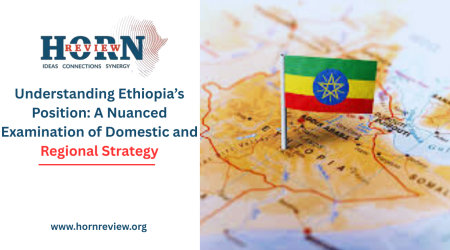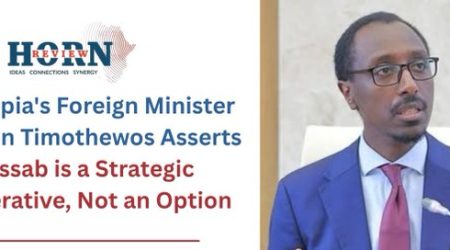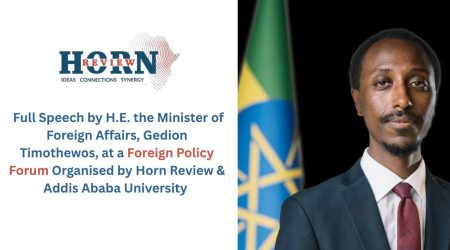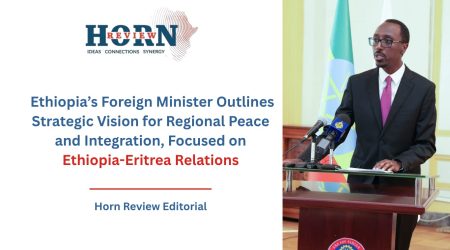
24
Nov
Ethiopia’s Military Dynamics: Internal Restraint and External Effectiveness Through a Clausewitzian Lens
By Blen Mamo
Ethiopia’s military history presents a pattern that is often misunderstood. While its armed forces have at times exercised restraint in internal conflicts, they have consistently demonstrated decisive effectiveness against external adversaries. This contrast is not a sign of institutional weakness; but rather a product sophisticated understanding of how political cohesion, military strategy, and the psychology of warfare interact. Clausewitz’s theoretical framework provides a useful lens for interpreting this pattern, emphasizing that war is determined not only by logistics and material force but also by moral forces, perception, and political purpose. Historical Ethiopian leaders have repeatedly balanced restraint in domestic conflicts with decisive action against foreign threats, achieving long-term stability while preserving national sovereignty.
Clausewitz’s trinity – government, army, and people – illustrates that military effectiveness depends on alignment across these domains. Internal conflicts disrupt this alignment because soldiers are asked to confront members of their own society, creating moral and psychological dilemmas that limit the efficacy of coercive force. Ethiopia has historically addressed this challenge not through indiscriminate violence, but by leveraging political and social mechanisms to isolate insurgent and anti-state movements. Communities are encouraged or allowed to withdraw support from insurgents, reducing their operational capacity and preventing cycles of prolonged violence. This long-term strategy highlights the Ethiopian understanding that legitimacy, morale, and societal perception are as decisive as firepower.
The strategic pattern of internal restraint coupled with external decisiveness is evident throughout Ethiopia’s modern history, a pattern further reinforced by a recurring historical dynamic: external threats often emerge precisely at moments of internal political transition. Foreign adversaries have repeatedly interpreted Ethiopia’s internal reorganization, succession struggles, and political recalibrations as windows of vulnerability. Yet these external pressures have paradoxically catalyzed national cohesion by unifying government, army, and population – thereby realigning Clausewitz’s trinity at the very moments it appears fractured. This pattern is visible from the Zemene Mesafint through Tewodros II, Yohannes IV, Menelik II, Haile Selassie I, the Derg, and the early EPRDF period. In each case, foreign actors miscalculated Ethiopia’s ability to mobilize effectively during internal change.
Emperor Tewodros II faced the fragmented political order of the Zemene Mesafint, struggling for years to assert centralized authority over semi-autonomous regional rulers. Despite his internal challenges, when the British expeditionary force invaded his territory in 1868, Tewodros mobilized effectively and repelled the incursion – leading to his martyrdom at the Battle of Maqdala. This outcome illustrates that Ethiopia’s military could perform decisively against an external threat even when nation building was actively challenged and internal cohesion was incomplete. The psychological factor was crucial: soldiers and society perceived the British as a clear existential adversary, and the legitimacy of the central command against a foreign invader unified both army and people in a manner unavailable in internal suppression.
Emperor Yohannes IV contended with similar internal fragmentation, attempting to consolidate authority over a diverse set of territories, including Shoa and other areas that would later form modern Ethiopia. Regional loyalties remained fluid, and his authority was challenged by semi-independent local rulers. Yet, when the Mahdist Sudanese armies advanced, his forces achieved victory, demonstrating that operational success against foreign forces did not require complete internal consolidation. Yohannes’s martyrdom at the Battle of Metemma in 1889 underscores the inherent risks, yet the army’s alignment around a clear external threat ensured the preservation of national sovereignty despite domestic instability.
Emperor Menelik II faced the immense challenge of centralizing authority across modern Ethiopia’s vast and ethnically diverse territories while simultaneously preparing to confront colonial encroachment. Internal rivalries and competing claims to local authority threatened the coherence of the state, yet Menelik marshaled his forces to achieve a historic victory over Italy at the Battle of Adwa in 1896. This triumph exemplifies the principle that operational success against an external adversary is possible even amid profound internal fragility, provided that soldiers’ morale, perception of the threat, and legitimacy of command are fully engaged. The Ethiopian population rallied around the defense of sovereignty, reinforcing Clausewitz’s insight that the moral and psychological dimension of war is decisive.
Haile Selassie’s leadership during the Italian invasion of 1935–36 further confirms this dynamic. At a time when internal rivalries and political fragility threatened the coherence of the kingdom and the state, Selassie successfully mobilized both the army and the broader population. The existential threat posed by Mussolini’s forces created the psychological alignment necessary for effective resistance, highlighting the enduring importance of moral forces in the Ethiopian strategic calculus. The clarity of external threat enabled cohesion and focused operational effort despite internal divisions.
During the Derg regime, Mengistu Haile Mariam ruled Ethiopia amid profound internal instability marked by political purges, social unrest, and widespread regional dissent. Yet in the 1977–78 Ogaden War, Ethiopian forces secured a decisive victory against Somalia, reaffirming a longstanding Ethiopian pattern: internal fragility does not preclude military effectiveness against external adversaries when psychological, political, and strategic alignment is achieved. The contrast is further underscored by the Derg’s inability to defeat the TPLF and EPLF – domestic insurgent movements that, unlike foreign armies, were not perceived as external foes. Their status as Ethiopian actors complicated the moral and psychological dimensions of the conflict, limiting the regime’s ability to translate military power into lasting control.
A similarly instructive episode unfolded during Eritrea’s invasion of Ethiopia in 1998–2000. Eritrean leaders assumed that Ethiopia’s apparent military disarray, internal political fragmentation, and the unpopularity of the TPLF-led government would enable a rapid victory – believing the conflict would amount to a localized struggle between Eritrea and Ethiopia’s Tigray region. Yet once Eritrean forces crossed the border, Ethiopian soldiers and the broader population no longer regarded them as former comrades or political rivals, but as a foreign aggressor. This psychological shift – absent in the Derg’s conflicts with the TPLF and EPLF – proved decisive. Even within the TPLF and other EPRDF factions, Eritrean forces were immediately perceived as external invaders, no different from the European, Egyptian, or Somali armies of earlier eras. The war thus triggered a nationwide mobilization that culminated in Ethiopia’s decisive military victory.
This outcome underscores a persistent strategic pattern: external threats have the power to unify the state, even when internal legitimacy is contested. It also explains Eritrea’s post-Badme reliance on proxy warfare – recruiting and arming local militias rather than engaging Ethiopia directly. By contrast, the TPLF-led EPRDF, despite its substantial military capacity, could not maintain power through force alone against domestic actors like the OLF or in the face of widespread protests in Oromia and Amhara between 2016 and 2018. These opponents were Ethiopian, and thus the psychological and moral conditions necessary for decisive coercion were absent.
Prime Minister Abiy Ahmed’s post-2018 approach represents a sophisticated continuation of Ethiopia’s strategic tradition – expanding the scope of internal restraint while enhancing deterrence against potential foreign threats. Confronted shortly after assuming office by full-scale conventional and guerrilla attacks from the TPLF – a militarily seasoned and politically experienced actor that had governed Ethiopia for nearly three decades – Abiy did not rely solely on overwhelming force, as some previous regimes had. Nor did he make war the defining condition of his administration. Instead, his strategy emphasized containing conflict spillover, protecting civilians, and gradually eroding insurgent legitimacy through political, socio-economic, and strategic measures.
Across Tigray, Oromia, and Amhara, communities have progressively withdrawn support from armed groups, reflecting a deliberate, long-term approach consistent with Ethiopia’s historical practice: exercise maximum restraint, prioritize equitable development to refocus public attention on broader national concerns, preserve societal cohesion, and maintain readiness for decisive external defense. This approach contrasts sharply with the Derg era, when similar internal challenges elicited an overreliance on force. For nearly two decades, the Derg operated under a wartime economy and diplomacy, waging extensive campaigns against the TPLF, EPLF, and other insurgent movements – cycles of violence that weakened the state and contributed to the loss of critical national assets, including sovereign access to the sea. Excessive coercion without credible political solutions has repeatedly eroded legitimacy and deepened societal fragmentation – a historical lesson that Ethiopia’s current leadership appears to have internalized with notable clarity.
Across these historical cases, a clear pattern emerges: Ethiopia’s military effectiveness against external adversaries depends on the alignment of political authority, operational cohesion, and psychological perception. Soldiers perform optimally when confronting a clearly defined foreign threat, when the legitimacy of the state’s objectives is uncontested, and when popular support reinforces morale. Internal insurgencies, by contrast, require strategic restraint – balancing calibrated military action with political and social mechanisms that isolate insurgents without alienating the broader population. This dual posture – restraint internally, decisiveness externally – has long enabled Ethiopia to preserve both national cohesion and sovereignty. Contemporary Ethiopia, despite ongoing internal political challenges, benefits from relatively stronger institutions, a more integrated economy, and a professionalized modern military, all of which enhance its capacity to respond decisively to foreign threats. The country’s strategic environment is shaped by the wider Horn of Africa: Red Sea geopolitics, maritime security concerns, Gulf state involvement, Sudanese instability, Al-Shabaab’s resurgence and shifting regional alliances within and beyond IGAD. These dynamics make the alignment of political, military, and societal forces more essential than ever for safeguarding sovereignty.
Looking ahead, Ethiopia must continue to navigate internal political contestation, economic pressures, and regional instability. Historical experience demonstrates that national resilience has never depended on the absence of internal challenges, but rather on the state’s ability to preserve sufficient legitimacy and societal cohesion to prevent those challenges from weakening its external security posture. When these foundations remain intact, Ethiopia has consistently demonstrated the capacity to deter or defeat foreign threats even amid domestic strain, underscoring that the country’s security depends as much on political and social alignment as on military capability.
In this context, today’s Ethiopia – drawing on these long-standing lessons while adapting to contemporary realities – must continue to cautiously manage internal dynamics, strengthen national readiness, and ensure that external challenges can be addressed effectively. In doing so, the country safeguards its sovereignty while laying the foundation for sustained national cohesion.
About the Author
Blen Mamo is the Executive Director of Horn Review, an independent research and publication think-tank focused on politics, diplomacy and security in the Horn of Africa. She is also an Associate Researcher at the Ethiopian Institute of Foreign Affairs, Executive Editor of Horn Review publications, and Executive Producer of the Strategic Dialogue Podcast Series Co-Produced by the Horn Review & the Institute of Foreign Affairs. She holds an LLB, and MSc in International Security & Global Governance from the University of London.










